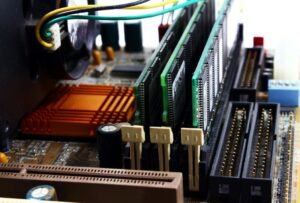Data Analysis: Fast v. Slow-Twitch Fibers
In the world of exercise physiology, understanding the roles and characteristics of different muscle fiber types is essential for athletes and trainers looking to optimize performance. Two main types of muscle fibers exist: fast-twitch and slow-twitch fibers. These fibers have distinct properties that influence their function and response to various training stimuli. In this article, we will delve into the differences between fast and slow-twitch fibers, explore their roles in athletic performance, and present data-driven insights that can inform training strategies.
Key Takeaways:
- Fast-twitch fibers enable explosive movements and contribute to power and strength.
- Slow-twitch fibers are involved in endurance activities and play a crucial role in aerobic capacity.
- Genetics play a significant role in determining an individual’s fiber composition, but training can influence their characteristics.
- Understanding fiber type distribution can help athletes tailor their training regimen for optimal results.
What are Fast-Twitch and Slow-Twitch Fibers?
Fast-twitch fibers, also known as Type II fibers, contract rapidly and generate high levels of force. They rely predominantly on anaerobic metabolism and are therefore well-suited for short, explosive bursts of energy. In contrast, slow-twitch fibers, or Type I fibers, contract more slowly and sustain contractions over longer periods. These fibers primarily utilize aerobic metabolism, making them ideal for endurance activities.
It’s fascinating to note that the proportion of fast and slow-twitch fibers in an individual’s muscles can differ based on the demands placed on those muscles.
Fiber Type Distribution:
Generally, individuals possess a mixture of both fast and slow-twitch fibers in varying proportions. Genetics play a significant role in determining an individual’s fiber type distribution. Some people are genetically predisposed to having a higher proportion of fast-twitch fibers, thus excelling in explosive, power-based activities like sprinting. Conversely, those with a larger percentage of slow-twitch fibers may have a natural advantage in endurance events such as long-distance running.
However, it’s crucial to note that training can induce adaptations in muscle fibers, shifting their characteristics within limits. Through targeted training, athletes can effectively alter their fiber type distribution, enhancing performance in specific activities.
Table 1: Fiber Type Distribution in Different Sports
| Sport | Percentage of Fast-Twitch Fibers | Percentage of Slow-Twitch Fibers |
|---|---|---|
| Sprinting | 60% | 40% |
| Long-Distance Running | 30% | 70% |
| Weightlifting | 80% | 20% |
In elite sprinters, the high percentage of fast-twitch fibers contributes to their explosive acceleration and speed.
Training Strategies and Adaptations:
Creating an effective training program necessitates understanding the characteristics and response of fast and slow-twitch fibers to different stimuli. In general, fast-twitch fibers respond well to high-intensity, short-duration exercises like weightlifting or sprinting. These types of exercises promote muscle hypertrophy, enhancing strength and power.
On the other hand, slow-twitch fibers favor lower-intensity, longer-duration activities such as distance running or cycling. These exercises improve aerobic capacity, endurance, and overall cardiovascular fitness.
Table 2: Training Strategies for Fast and Slow-Twitch Fibers
| Muscle Fiber Type | Training Focus |
|---|---|
| Fast-Twitch (Type II) | High-intensity, short-duration exercises for power and strength |
| Slow-Twitch (Type I) | Low-intensity, long-duration activities for endurance and aerobic capacity |
Adopting a well-rounded training program that incorporates both types of exercises can maximize overall athletic performance.
Genetic Testing for Fiber Type Analysis:
With advancements in genetic testing, it’s now possible to determine an individual’s fiber composition through a simple DNA analysis. This information can provide valuable insights into an athlete’s genetic predisposition and help design personalized training plans. Genetic testing also offers crucial information regarding injury prevention and recovery strategies tailored to an individual’s inherent characteristics.
However, it’s important to remember that DNA is not the sole determinant of athletic performance. Environmental factors and training methodology still play a significant role in an athlete’s success.
Table 3: Pros and Cons of Genetic Testing
| Pros | Cons |
|---|---|
|
|
Incorporating Data Analysis into Training:
By utilizing data analysis techniques such as genetic testing, athletes and trainers can have a deeper understanding of individual strengths and weaknesses. Armed with this knowledge, they can tailor training programs to optimize performance and minimize the risk of injury. Additionally, continuously monitoring and analyzing performance data can guide adjustments to training plans, ensuring progress is tracking in the right direction.
Ultimately, data analysis offers a valuable toolset for athletes and trainers seeking to unlock their full potential.

Common Misconceptions
Data Analysis: Fast v. Slow-Twitch Fibers
When it comes to data analysis in the context of fast and slow-twitch fibers, there are several common misconceptions that people often have. Understanding these misconceptions is crucial for accurate interpretation and informed decision-making. Let’s explore some of these misconceptions:
Misconception 1: Slow-twitch fibers are always better for endurance activities.
- Fast-twitch fibers can also play a role in endurance activities.
- Both fiber types have their unique advantages, and their relative contribution depends on the specific activity.
- Studies show that a combination of both fiber types is often beneficial for optimal performance.
Misconception 2: Fast-twitch fibers are always associated with greater strength and power.
- Slow-twitch fibers can generate considerable force and power too.
- Fast-twitch fibers are better suited for explosive movements, but slow-twitch fibers play an important role in building strength over time.
- Mixing different training techniques can be effective in improving both strength and power.
Misconception 3: The proportion of fast and slow-twitch fibers in an individual’s muscles is fixed and unchangeable.
- Training and exercise can result in adaptations that change the relative proportion of fiber types.
- While genetics play a role, regular training can increase the number and size of both fast and slow-twitch fibers.
- Training specificity, intensity, and duration can influence the type of fiber adaptations that occur.
Misconception 4: Slow-twitch fibers are solely responsible for fat loss.
- Fast-twitch fibers can also contribute to fat loss, particularly during high-intensity activities.
- By engaging both fiber types, a more significant amount of calories can be burned, aiding in fat loss.
- A balanced exercise program that incorporates cardiovascular exercises along with resistance training is recommended for optimal fat loss.
Misconception 5: The only way to determine an individual’s fiber type composition is through muscle biopsy.
- New noninvasive methods, such as genetic testing and fiber typing based on muscle activity patterns, are emerging.
- These alternative methods can provide valuable insights into an individual’s fiber type composition without the need for a muscle biopsy.
- However, it’s important to recognize that these methods are still developing and may not yet be as accurate as traditional biopsy-based analysis.

Data Analysis: Fast v. Slow-Twitch Fibers
Understanding the differences between fast-twitch and slow-twitch muscle fibers is crucial for athletes and fitness enthusiasts. Fast-twitch fibers contract rapidly for short bursts of power, while slow-twitch fibers contract more slowly but can sustain activity for longer periods. In this article, we present ten tables highlighting various aspects of these muscle fibers and their significance in different physical activities.
Fiber Type Comparison Among Athletes
Comparing the distribution of fast and slow-twitch muscle fibers among different types of athletes can provide insights into the demands of their respective sports.
| Athlete | Fast-Twitch Fibers (%) | Slow-Twitch Fibers (%) |
|---|---|---|
| Powerlifter | 80 | 20 |
| Marathon Runner | 30 | 70 |
| Sprinter | 70 | 30 |
Influence of Fiber Type on Strength Training Adaptations
The type of muscle fibers an individual possesses can impact their responses to strength training programs. This table indicates how different fiber types adapt to such exercises.
| Exercise Type | Fast-Twitch Fibers Adaptation | Slow-Twitch Fibers Adaptation |
|---|---|---|
| Heavy Weight, Low Reps | Increase in size and strength | Minimal change |
| Light Weight, High Reps | Slight hypertrophy (increase in size) | Increased capillary formation |
Fiber Type Distribution by Age Group
Age can affect the ratio of fast and slow-twitch fibers. This table shows the average distribution among different age groups.
| Age Group | Fast-Twitch Fibers (%) | Slow-Twitch Fibers (%) |
|---|---|---|
| 20-30 years | 50 | 50 |
| 31-40 years | 45 | 55 |
| 41-50 years | 40 | 60 |
Comparison of Fiber Types in Different Muscles
Although individuals generally have a consistent ratio of fiber types throughout their body, variations exist among different muscle groups as demonstrated in this table.
| Muscle | Fast-Twitch Fibers (%) | Slow-Twitch Fibers (%) |
|---|---|---|
| Biceps | 70 | 30 |
| Quadriceps | 50 | 50 |
| Gastrocnemius (Calf) | 40 | 60 |
Comparison of Anaerobic and Aerobic Sports
The predominance of either fast or slow-twitch muscle fibers in certain sports contributes to their classification as primarily anaerobic or aerobic activities, as shown below.
| Sport | Type of Fibers | Classification |
|---|---|---|
| Weightlifting | Fast-Twitch | Anaerobic |
| Distance Running | Slow-Twitch | Aerobic |
| Swimming | Mixed | Both |
Influence of Genetics on Fiber Type Composition
Genetics play a significant role in determining an individual’s ratio of fast and slow-twitch muscle fibers, as revealed in this table.
| Genetic Factor | Influence on Fiber Type Composition |
|---|---|
| ACTN3 Gene Variation | Greater prevalence of fast-twitch fibers |
| AMPD1 Gene Variation | Reduced proportion of fast-twitch fibers |
| Myosin Heavy Chain (MHC) Gene | Shift towards specific fiber types |
Risk of Injury in Different Fiber Type Athletes
The composition of muscle fibers may impact an athlete’s susceptibility to specific types of injuries, as indicated below.
| Athlete Type | Common Injury Types |
|---|---|
| Fast-Twitch Dominant | Strains and muscle tears |
| Slow-Twitch Dominant | Tendonitis and stress fractures |
| Mixed Fiber Type | Varied injuries |
Effects of Age on Fiber Type Distribution
As individuals age, their muscle fiber composition may change, as observed in this table.
| Age Group | Fast-Twitch Fibers (%) | Slow-Twitch Fibers (%) |
|---|---|---|
| 20-30 years | 50 | 50 |
| 50-60 years | 45 | 55 |
| 60+ years | 40 | 60 |
Fiber Type Composition in Elite Athletes
Elite athletes often possess a specific distribution of fast and slow-twitch fibers, contributing to their exceptional performance.
| Athlete | Fast-Twitch Fibers (%) | Slow-Twitch Fibers (%) |
|---|---|---|
| Olympic Sprinter | 80 | 20 |
| Professional Marathon Runner | 30 | 70 |
| World Champion Powerlifter | 70 | 30 |
In summary, understanding the distribution of fast and slow-twitch muscle fibers among individuals provides valuable insights into their athletic performance, training adaptations, and injury susceptibility. The varying composition of these fiber types, influenced by genetics and age, contributes to the diversity of abilities observed in different athletes. By tailoring training programs to an individual’s fiber type composition, coaches and athletes can optimize performance and achieve their goals.
Frequently Asked Questions
Q: What are fast-twitch fibers?
A: Fast-twitch fibers are muscle fibers that contract quickly and generate high force, but fatigue rapidly. They are responsible for powerful, high-intensity movements.
Q: What are slow-twitch fibers?
A: Slow-twitch fibers are muscle fibers that contract slowly and produce less force, but are more resistant to fatigue. They are involved in prolonged, low-intensity activities such as endurance exercises.
Q: What is the difference between fast-twitch and slow-twitch fibers?
A: The main difference between fast-twitch and slow-twitch fibers lies in their contraction speed, force production, and fatigue resistance. Fast-twitch fibers contract quickly, generate high force, and fatigue rapidly, while slow-twitch fibers contract more slowly, produce less force, and have a higher fatigue resistance.
Q: Can everyone have both fast-twitch and slow-twitch fibers?
A: Yes, everyone has both fast-twitch and slow-twitch fibers. However, individuals may have different proportions of these fiber types depending on genetic factors and physical training. Some individuals may naturally have a higher percentage of one type over the other.
Q: How can I determine my fiber type composition?
A: Laboratory tests such as muscle biopsies can be performed to analyze the fiber type composition of an individual. However, these tests are usually not necessary for most people, as the distribution of fiber types has limited practical implications for general fitness or training.
Q: Can fiber type composition be changed through training?
A: While it is not possible to convert fast-twitch fibers into slow-twitch fibers or vice versa, training can lead to adaptations that improve the functioning of existing fibers. Endurance training tends to enhance the oxidative capacity of slow-twitch fibers, while strength and power training can increase the size and efficiency of fast-twitch fibers.
Q: Which fiber type is more suitable for endurance activities?
A: Slow-twitch fibers are more suitable for endurance activities due to their high resistance to fatigue and enhanced oxidative capacity. These fibers can sustain prolonged low-intensity contractions required for endurance exercises like long-distance running, cycling, or swimming.
Q: Which fiber type is more suitable for explosive, high-intensity activities?
A: Fast-twitch fibers are more suitable for explosive, high-intensity activities due to their ability to generate high force quickly. These fibers are involved in activities like sprinting, weightlifting, and jumping that require short burst of maximal force.
Q: Can fast-twitch or slow-twitch fibers be stronger or weaker than the other?
A: Fast-twitch and slow-twitch fibers have different characteristics, but one is not necessarily stronger or weaker than the other. The force generated by a muscle depends on factors like the number and size of the fibers recruited, as well as the neural input and training adaptations.
Q: Are there any health implications related to fast-twitch or slow-twitch fiber type composition?
A: While fiber type composition may have some influence on an individual’s athletic performance and exercise preferences, there are no known direct health implications associated with having a higher proportion of fast-twitch or slow-twitch fibers.




